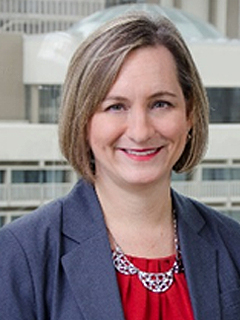Footnotes
- IFRS 17, Insurance Contracts
- IFRS 4, Insurance Contracts
- ASU 2018-12, Targeted Improvements Related to the Accounting for Long-Duration Insurance Contracts
When adopting IFRS 17, US insurers are trying to minimize disruption to their primary basis of reporting.

Insurers have just over a year to get ready to present their opening balance sheet (as of January 1, 2022) under IFRS 171, which introduces a completely new financial reporting basis. A US insurer might report to a foreign parent under IFRS® Standards or be a US parent looking to centralize the accounting policies of its foreign subsidiaries and branches that report locally under IFRS Standards. In this article, we highlight how US dual reporters and US parents can accelerate their IFRS 17 implementation projects, minimize operational disruption, and manage implementation costs.
The final amendments to IFRS 17 were published in June 2020, and the new standard will replace IFRS 42 in 2023. IFRS 4 was introduced as an interim standard designed to limit changes to existing insurance accounting practices under IFRS Standards. It focused on the definition of an insurance contract and types of contracts in scope. IFRS 4 also allowed insurers to maintain existing accounting policies when accounting for insurance contracts under local GAAP. For example, this is the case for US dual reporters who currently use US GAAP as the basis for IFRS 4 financial reporting.
In order to comply with IFRS 17, US dual reporters need to develop significantly different accounting policies and actuarial methodologies for measuring and accounting for insurance contracts. Further, US dual reporters are faced with the challenges of implementing IFRS 17, while still focusing on their primary basis of financial reporting – US GAAP and/or US statutory accounting principles (US STAT).
Under US GAAP, many US dual reporters will have the additional challenge of implementing ASU 2018-123, which differs significantly from IFRS 17. According to Michael Lammons, Co-Leader of KPMG’s Insurance Accounting Change practice, “IFRS 17 is very different from US GAAP. With just 13 months to get ready to present an opening balance sheet and amongst all the COVID-19 related diversions now, more than ever, the pressure is on to get to the finish line.”
Considerations for US dual reporters
Leveraging our experience in working with insurers in the US and across the globe, we highlight our view of the best practices and priorities for US dual reporters to consider in order to accelerate IFRS 17 implementation and minimize disruption to their operations and timelines related to their primary basis of reporting.
Key takeaway: Do not underestimate the importance of a PMO; many accounting change programs are not successful without one. Develop the appropriate governance frameworks for the business but remain agile and practical. Given tight timelines for implementation, burdensome governance processes could be detrimental to progress. Ensure there is a detailed project plan with effective monitoring of cross-workstream dependencies to maintain momentum and meet milestones. Have a broader long-term budgeting vision and monitor progress against budget while also having a more granular short-term outline (e.g. one to three months) to limit overruns.
Considerations for US parents
Although not IFRS preparers themselves, US parents may be strategically vested in their subsidiaries’ IFRS 17 reporting. This reporting may be the basis for dividend distribution from the subsidiary up to the US parent; therefore, IFRS 17 may directly affect the US parent’s capital and, for listed parents, the ability to distribute dividends to shareholders. Subsidiaries may also have local capital regimes and/or taxation based on IFRS Standards, so IFRS 17 is critical to their solvency level and tax reporting requirements.
This is why some US parents lead centralized IFRS 17 programs to ensure consistent application of policies by their foreign subsidiaries and/or branches reporting under IFRS Standards. In this case, the points discussed above for US dual reporters apply to US parents. However, US parents also should consider devising standardized solutions to satisfy the needs of all relevant foreign subsidiaries and/or branches.
It is critical to ensure that the requirements set by local regulators are met. US parents should invest time and effort in monitoring the developments of relevant local regulators as they determine whether and how to adopt IFRS 17 overseas. Having to satisfy a variety of regulatory regimes is a challenge. Each regulator has different levels of engagement with regard to IFRS 17; for example, some regulators are requiring quantitative studies while others have yet to initiate discussions in the market. Each regulator also may have its own timeline for the evaluation of IFRS 17, which may potentially mean different effective dates within the US parent group. Further, each regulator has the potential to mandate technical accounting deviations that will require consideration when developing standardized solutions. Consequently, the least operationally complex solutions may not be optimal for some subsidiaries.
Key takeaway: To factor in and stay up to date on local regulatory developments, US parents should work closely with their subsidiary management teams – local knowledge and involvement is essential. US parents should also consider how best to achieve their target operating model and incorporate potential regulatory differences into their programs; for some, applying the differences to a standardized solution on an ad hoc basis may be costly but more manageable. Conversely, others may prefer to allow subsidiaries to deal with differences in local requirements.
What next?
Since IFRS 17 was announced, insurers in the US and across the globe have been preparing for this major evolution in insurance reporting. While multiple deferrals have provided some breathing space, a sense of urgency is needed to get to the finish line given that there is just over a year until the opening balance sheet date.
“The key measure of success will be effective management of costs and minimal disruption to the existing US GAAP / US STAT financial reporting bases,” says Laura Gray, Co-Leader of KPMG’s Insurance Accounting Change practice. To achieve this in the time remaining before the adoption date, US insurers should: focus on operational complexities and balance them with financial ones; identify working assumptions early on; design and execute streamlined end-to-end testing; and ensure effective program management and governance.
The reality is that it will take a significant level of effort and expertise over a very tight timeframe to achieve a successful IFRS 17 implementation.
Resources
| Amendments: | IFRS 17 guide and illustrative disclosures |
CPE seminars and customized training

Going concern: IFRS® Standards compared to US GAAP
Management’s assessment of going concern is in the spotlight because of COVID-19 and uncertainties involved.

November 17, 2022 | Consumer Perspectives: Grow in uncertain times
Spotlight on CFOs and Internal Audit




Subscribe to receive timely updates on the application of IFRS® Accounting and Sustainability Standards in the United States: our latest thought leadership, articles, webcasts and CPE seminars.